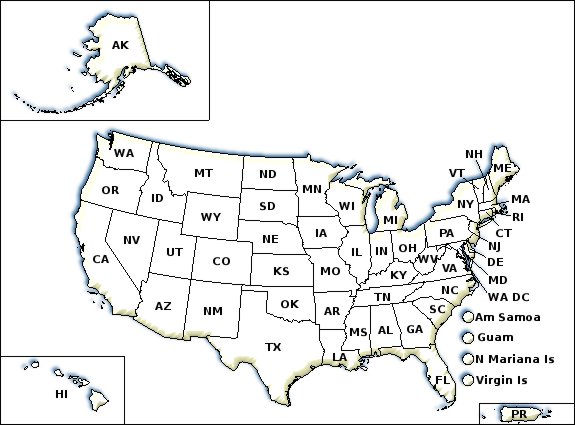Flies
1.800.858.7378npic@oregonstate.edu
We're open from 8:00AM to 12:00PM Pacific Time, Mon-Fri
A to Z

Flies are not only a nuisance, but they can also spread disease when they contact garbage and feces before landing on food or food preparation areas. The most common nuisance flies are the filth flies which include the house fly, the little house fly, the face fly, the stable fly, the blow fly, the blue and green bottle fly, and the fruit fly.
Though pesticides can temporarily reduce an infestation, the most effective way of getting rid of flies is by eliminating their breeding grounds. The best way to manage them is to target them in their larval stage. Larvae (maggots) usually live in animal waste, garbage, decaying plant matter including compost or grass clippings, and other moist environments.
Control tips:
- It's important to identify your pest to find the most effective way to control an infestation. Different types of flies have different behavior and may require different control methods. Consult your local Cooperative Extension Service for help identifying your pest.
- Find and eliminate breeding sites. Some common breeding sites include garbage cans, dumpsters, compost bins, manure, and animal feces. It's more effective to get rid of larvae than adult flies.
- Take trash out at least once or twice a week. If you are already doing this, the flies may be growing outside of your home and are attracted inside by odors.
- Eliminate any odors that may be attracting the flies indoors. Odors usually come from dumpsters, garbage cans, kitchens, and cafeterias.
- Outdoor dumpsters should be at least 50 feet away from kitchen doors and/or windows. Keep doors to the outside closed when not in use to prevent more flies from entering your home.
- Install screens and make sure existing screens are sealed to keep flies from entering.
- Fix any drains or garbage disposals that may be leaking. Leaky drains can attract several species of flies.
- Rinse any cans, bottles, and plastic containers before recycling or throwing away.
- If you have pets, put their feces in a plastic bag and seal it before throwing it away. Do this as soon as possible. Damp droppings can breed fly larvae (maggots).
- Flies may become resistant to chemical pesticides. If you decide to use pesticides, always read and follow all label instructions carefully.
Life cycle:
- All flies have 4 life stages: egg, larva (maggot), pupa, and adult.
- Female flies deposit eggs in animal feces, decaying plant matter/animal flesh, and other moist environments. This is also where the maggots complete their development. They go through 3 stages and get bigger with each stage.
- House flies may develop from egg to adult in as little as 7 days.
- Female flies can lay several batches of eggs. They usually contain over 100 eggs each! This is why it’s important to eliminate breeding sites.
If you have questions about this, or any pesticide-related topic, please call NPIC at 800-858-7378 (8:00am - 12:00pm PST), or email us at npic@ace.orst.edu.
Flies
- Identify your pest.
- Identify where the flies are coming from.
- Eliminate breeding sites like trash, manure, and compost.
- Reduce or eliminate breeding sites and odors that may attract flies, such as odors from trash or food waste.
- Cover trash cans and empty trash frequently.
- Make sure outdoor dumpsters are at least 50 feet away from kitchen doors and windows.
- Keep doors and windows to the outside closed and install and maintain screens to prevent flies from entering the building.
- Fix any leaky drains or garbage disposals.
- Rinse out containers before recycling them.
- Dispose of your pet’s droppings as soon as possible in a sealed bag.
- If you choose to use a pesticide, always follow the label. Try a lower toxicity product first.
- If you have a pesticide product in mind, have your label handy and click here to look up information about that product.
County Extension Offices
Through its county agents, the Cooperative Extension Service gives individuals access to the resources at land-grant universities across the nation. These universities are centers for research in many subjects, including entomology (the study of insects) and agriculture. Each county within the United States has an Extension office, which is staffed with agents who work closely with university-based Extension specialists to deliver answers to your questions about gardening, agriculture, and pest control. You can find the phone number for your local county extension office in the local government section (often marked with blue pages) of your telephone directory or by clicking on the map below.

U.S. States:
AK | AL | AR | AZ | CA | CO | CT | DE | FL | GA | HI | IA | ID | IL | IN | KS | KY | LA | MA | MD | ME | MI | MN | MO | MS | MT | NC | ND | NE | NH | NJ | NM | NV | NY | OH | OK | OR | PA | RI | SC | SD | TN | TX | UT | VA | VT | WA | WI | WV | WY | Washington D.C. |
U.S. Territories:
Puerto Rico | American Samoa | Guam | Northern Mariana Islands | Virgin Islands
Additional Resources:
- Common Household Flies and Prevention Tips - University of Arizona Cooperative Extension
- IPM Action Plan for House Flies and Filth Flies - Texas A&M Agrilife Extension
- How to Manage Pests: Flies - University of California Agriculture & Natural Resources
- Integrated Pest Management: Flies - California Department of Pesticide Regulation
- Flies and Schools - U.S. Environmental Protection Agency
- IPM for Flies - The Board of Regents of the University of Nebraska–Lincoln
